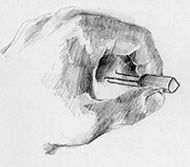

|
<creators> papers & manuals hardware software keywords |
Introduction The invention of the transistor liberated the computer world. In the labratories of Bell Telephone, John Bardeen, Walter Brattain and William Shockley discovered the "transfer resistor"; later labelled the transistor. Using very small quantities of certain impurities with materials called semi conductors, they created a tiny switch which controlled the passage of electricity. Consequently, this development emerged to replace the large vacume tubes that were previously used in computers - drastically reducing the size of computing machines. As a result, by replacing tubes with transistors computers too became smaller, faster, increasingly reliable, more energy efficient and cheaper, combating many of the problems of computers faced in the generations before. By the 1950s and 1960s, computers used transistors in their designs. However, the computer industry was only gradually able to produce computers affordable enough for the average consumer. Until then computing technology was limited to large corporations and government agencies. This tiny device had a huge impact on and extensive implications for modern computers. In 1956, the transistor won its creators the Noble Peace Prize for their invention.
Description(1) Transistors had a number of marked advantages over vacume tubes:
Specifications
Release history
|
![]()
| Last Updated on 13 October, 2002 | For suggestions please mail the editors |
Footnotes & References
| 1 | Ian Litterick and Chris Smithers, The Story of Computers, p.30. |
| 2 | |
| 3 | |
| 4 | |
| 5 |